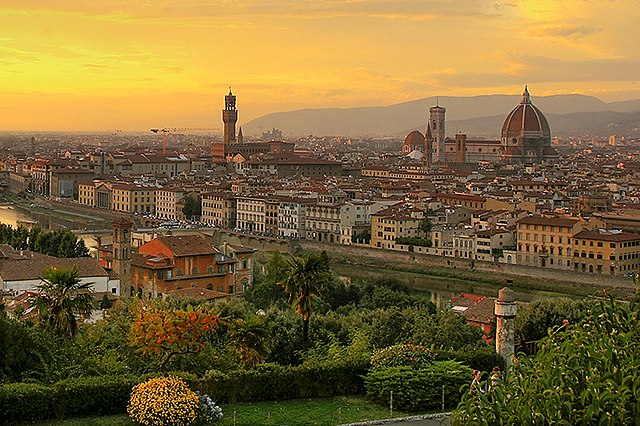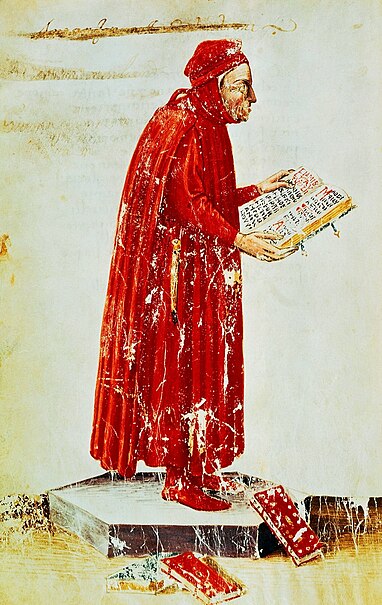Giorgio Vasari was an Italian Renaissance painter and architect, who is best known for his work Lives of the Most Excellent Painters, Sculptors, and Architects, considered the ideological foundation of all art-historical writing, and still much cited in modern biographies of the many Italian Renaissance artists he covers, including Leonardo da Vinci and Michelangelo, although he is now regarded as including many factual errors, especially when covering artists from before he was born.
Self-portrait (c. 1571–74), Uffizi Gallery
Six Tuscan Poets by Giorgio Vasari, c. 1544; from left to right: Cristoforo Landino, Marsilio Ficino, Francesco Petrarca, Giovanni Boccaccio, Dante Alighieri, and Guido Cavalcanti
The Garden of Gethsemane by Giorgio Vasari
The Uffizi Loggia
The Renaissance is a period in history and a cultural movement in Europe marking the transition from the Middle Ages to modernity. It generally covers the 15th and 16th centuries and is characterized by an effort to revive and surpass the ideas and achievements of classical antiquity. Associated with great social change in most fields and disciplines, including art, architecture, politics, literature, exploration and science, it was first centered in the Republic of Florence, then spread to the rest of Italy and later throughout Europe. The term rinascita ("rebirth") first appeared in Lives of the Artists by Giorgio Vasari, while the corresponding French word renaissance was adopted into English as the term for this period during the 1830s.
Florence, birthplace of the Italian Renaissance. The architectural perspective and new systems of banking and accounting were introduced during the time.
Portrait of a Young Woman (c. 1480–85) (Simonetta Vespucci) by Sandro Botticelli
View of Florence, birthplace of the Renaissance
Coluccio Salutati








